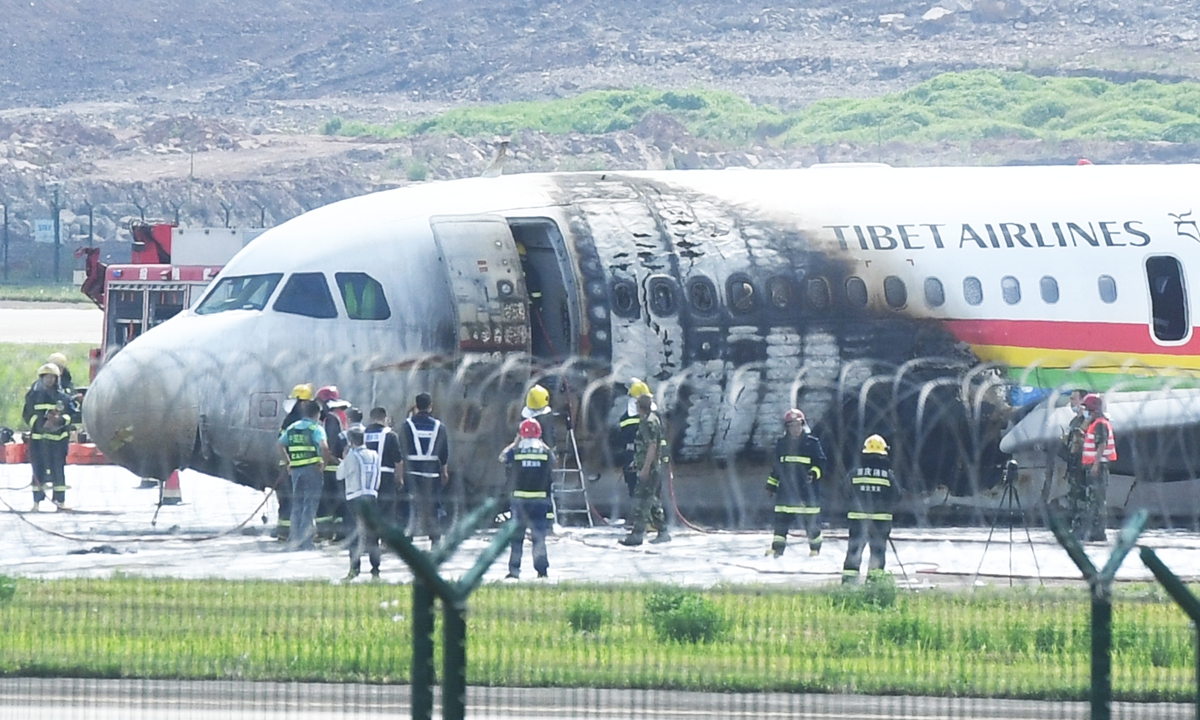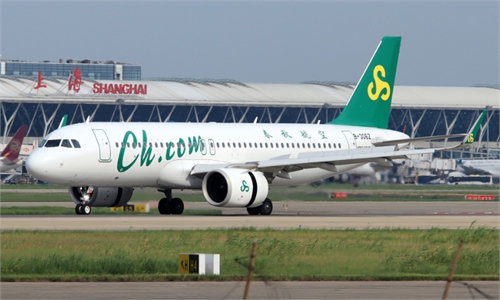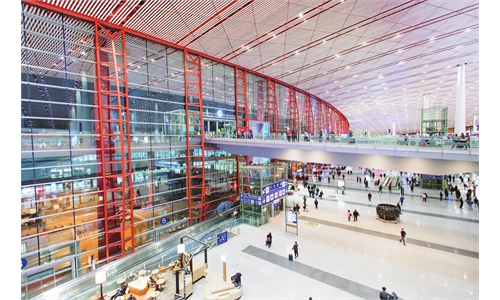Chinese provinces, cities start training to prevent pilots, air traffic controllers from becoming rusty amid light air traffic

Rescuers are seen at the site where a Tibet Airlines Airbus A319 caught fire after an aborted takeoff, at Chongqing Jiangbei International Airport in Southwest China's Chongqing Municipality on May 12, 2022. All 113 passengers and nine crew have been safely evacuated. Photo: VCG
As the number of flights remains low amid the COVID-19 pandemic, aircraft crew members and ground support facilities and equipment operate at low frequencies for a long time. In response, multiple areas in China have launched training drills to prevent pilots, maintenance workers and air traffic controllers from becoming rusty.
To keep air traffic controllers' ability to handle emergencies fresh, Sanya, South China's Hainan Province on May 11 carried out search and rescue drills and other special simulator training.
Also, to maintain pilots' technical ability and proficiency, three airlines in Southwest China's Chongqing Municipality have formulated and carried out training programs and flight training subjects for flight personnel.
While attaching great importance to the safety situation, the local authorities in Chongqing vowed to make reasonable use of airline and simulator resources to carry out high-quality flight training. In addition to paying attention to the qualifications and ability of flight personnel, the authorities said they would pay more attention to the mental state of flight personnel and ensure the safety of flight operations.
The Paper reported on Monday that in March 2022, a total of 140,277 flight hours had been completed in Southwest China, a year-on-year decrease of 43.36 percent. In the first quarter, airlines in Southwest China completed 492,535 flight hours of all kinds, a year-on-year decrease of 14.35 percent, and 123.8 percent of the same period of 2020.
Recently, two flight incidents made headlines in China. On May 12, a Tibet Airlines aircraft veered off the runway and caught fire at Chongqing Airport. Luckily, all 113 passengers and nine crew evacuated.
Wang Yanan, chief editor of Beijing-based Aerospace Knowledge magazine, told the Global Times that the deviation from the runway may be a result of the pilot detecting a major technical or hidden danger while taking off, and therefore abandoning the effort, otherwise it may have been difficult for the plane to land safely back at the airport.
The incident came after China Eastern Flight MU5735 from Kunming to Guangzhou crashed on March 21 in southern China, killing all 132 passengers and crew on board.
China's civil aviation regulator on April 20 released the preliminary report on the crash, saying that the investigation so far found "no abnormality" in aircraft maintenance or airline personnel.
On May 11, the East China regional administration under the Civil Aviation Administration of China organized relevant departments and maintenance experts of China Eastern Airlines Technology Co to hold a symposium on aircraft technology.
According to the meeting, the sealing up and low utilization rates of aircraft often lead to a higher incidence of failures than in the past. In addition, the current epidemic prevention and control measures in Shanghai affect the operating efficiency of the company, and the epidemic further restricts the feedback and response speed of aircraft manufacturers. Under the influence of these factors, it is necessary for all departments of the company to further closely cooperate and quickly respond to challenges brought by the increase in sudden failures and difficulties in the deployment of aviation materials.
At the same time, maintenance personnel must ensure that their tasks can be correctly executed. In addition, the relevant departments of the company should strengthen the supervision and inspection of the troubleshooting work of important aircraft systems.
Also, the civil aviation authority will take various measures to strengthen spot checks to ensure the safety of aviation operations and people's lives.



